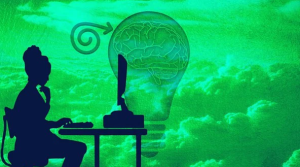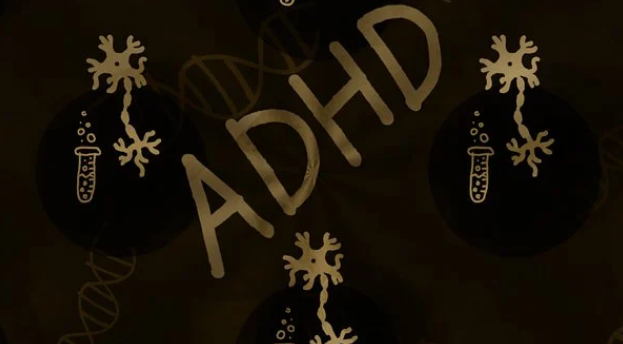Tests Done by a Neurologist for ADHD
ADHD or Attention-deficit hyperactivity disorder is a lifelong condition, and it can manifest in different ways in different people. For some people, it may manifest as a single, discrete disorder. Other people with the condition may have different symptoms that affect different areas of life. While it is usually diagnosed in childhood or early adolescence, it can manifest in adults.
 Consequently, the tests neurologists may use to diagnose the condition vary depending on the adult’s Stage 1 or Stage 2 diagnosis. For someone who has a Stage 1 diagnosis, the test would likely focus on the hyperactive-impulsive or ADD subtypes of the condition. However, for someone who has a Stage 2 diagnosis, the test may focus more on the inattentive type of Attention-deficit hyperactivity disorder.
Consequently, the tests neurologists may use to diagnose the condition vary depending on the adult’s Stage 1 or Stage 2 diagnosis. For someone who has a Stage 1 diagnosis, the test would likely focus on the hyperactive-impulsive or ADD subtypes of the condition. However, for someone who has a Stage 2 diagnosis, the test may focus more on the inattentive type of Attention-deficit hyperactivity disorder.
As such, clinical neurology may need to meet with other specialists to develop a coherent test plan. Clinical neurology may also consult with other specialists, such as a psychiatrist, as needed. This article highlights the different tests neurologists may perform for adult patients with Attention-deficit hyperactivity disorder.
1. Assessing The Brain
Brain imaging is a common way for a clinical neurologist to assess the brain’s functioning. This may include brain imaging (e.g., PET scan, MRI) to detect genetic disorders that have been linked to specific types of brain diseases, or functional MRI (fMRI) to detect changes in the way the brain responds to different tasks.
When evaluating the function of the brain, clinical neurology often focuses on the areas that are likely responsible for the patient’s symptoms. For example, people with ADHD often have lower-than-average intelligence. This may lead clinical neurology to look for factors that may be related to low brain functioning, such as injury, illness, medication side effects, diet, and other environmental factors.
2. Brain–behavioral Interactions
Another way clinical neurologists evaluate brain function is by looking for interactions between the brain and the nervous system. This is known as the “neurobiome,” and is perhaps most prominent in children, who may have underlying brain disorders. For example, a person with an underactive amygdala (the part of the brain that regulates emotion) may have difficulty controlling their emotions. This may have implications for social interaction and, as such, lead to a ” biosocial” problem, as the person may be perceived as ” cold” or ” distant” by those around them.
3. Assessment of Learning and Memory
Learning and memory are important components of cognitive function that are often assessed through neuropsychological testing. One way to do this is to look for evidence of dysfunction in areas that are likely to be involved in maintaining and retrieving memories. One common way to assess learning and memory is through the learning and memory portion of neuropsychological testing.
This includes tests that measure short- and long-term memory and recognition and recall. For example, the Rey Auditory Verbal Learning Test (RAVLT) is a widely used test to assess short-term memory in children and adults. The Backward Visual Retention Test (BVRT) is a commonly used test to assess long-term memory in children and young adults. Several other tests are also used to examine memory in the elderly, including the Mini-Mental State Examination, the Alzheimer’s Disease Assessment Scale, and the Clinical Dementia Rating.
How is Attention-Deficit Hyperactivity Disorder diagnosed?
 First, clinical neurology must determine if the patient has an actual condition called ADHD. If not, the doctor may use diagnostic criteria to identify the patient’s condition. The diagnostic criteria for Attention-deficit hyperactivity disorder are based on the Diagnostic and Statistical Manual of Mental Disorders, Fifth Edition (DSM-5), which is the official classification and diagnostic guide for psychiatry and behavioral sciences.
First, clinical neurology must determine if the patient has an actual condition called ADHD. If not, the doctor may use diagnostic criteria to identify the patient’s condition. The diagnostic criteria for Attention-deficit hyperactivity disorder are based on the Diagnostic and Statistical Manual of Mental Disorders, Fifth Edition (DSM-5), which is the official classification and diagnostic guide for psychiatry and behavioral sciences.
While the above list of factors that may contribute to the development of symptoms in children with Attention-deficit hyperactivity disorder is certainly not meant to be exhaustive, it should give readers an idea of what may be considered. As there is no one test to diagnose the condition, clinical neurology may use a combination of the following items to make the diagnosis.
How is Attention-Deficit Hyperactivity Disorder Treated?
To effectively treat or manage an adult patient with Attention-deficit hyperactivity disorder, a clinical neurologist will likely need to follow a formalized protocol. The following is a non-exhaustive list of treatment options.
1. Medication: Medication is the most frequently used approach to treating the condition. It is often prescribed in combination with another medication to strengthen its effect.
2. Combination Therapy: Combination therapy is a type of treatment that may be used when medications alone fail to provide adequate relief for nerve pain. It is meant to be used in combination with medication. Excessive-Force Implementations: Excessive-force implementations are used when medications are not effective or available, or when a patient has failed to respond to medications for Nerve Pain.
Empower Yourself: Seek Expert ADHD Diagnosis and Treatment
Diagnosing ADHD is a complex and multifaceted process that requires a comprehensive evaluation by a neurologist or a multidisciplinary team. By employing a variety of tests and assessments, neurologists can gather valuable information about the individual’s symptoms, cognitive functioning, and psychosocial context. This holistic approach ensures an accurate diagnosis and facilitates the development of personalized treatment plans tailored to the individual’s unique needs.
As the exact cause of ADHD is unknown, it is believed to result from a combination of genetic and environmental factors. Our Neurologist Fort Lauderdale can help patients understand their condition and develop strategies to deal with it. If you would like to learn more about ADHD, contact our office to speak with Dr. Jeff Steinberg, or call us at (954) 329-0053.
Frequently Asked Questions
1. What tests does a neurologist typically perform to diagnose ADHD?
A neurologist may employ several tests to diagnose ADHD, including a comprehensive medical history review, behavioral assessments, rating scales, and cognitive tests. They may also order brain imaging studies like an MRI or CT scan to rule out other neurological conditions.
2. Are there specific neurological tests for ADHD?
While there isn’t a single definitive test for ADHD, neurologists often use continuous performance tests (CPTs), such as the Conners Continuous Performance Test (CPT), or the Test of Variables of Attention (TOVA), to evaluate attention and impulsivity. These tests help in assessing cognitive functions that are often impaired in individuals with ADHD.
3. Do neurologists conduct physical examinations for ADHD diagnosis?
Yes, neurologists in Fort Lauderdale may perform physical examinations to rule out other medical conditions and assess neurological functioning. These exams may include evaluating reflexes, muscle tone, coordination, and sensory perception. However, ADHD diagnosis primarily relies on behavioral and cognitive assessments.
4. Are there any genetic tests used in ADHD diagnosis by neurologists?
While there are no specific genetic tests to diagnose ADHD, genetic factors are believed to contribute to its development. Neurologists may consider genetic testing in certain cases, especially when there’s a family history of ADHD or related conditions. However, genetic testing is not typically a routine part of ADHD diagnosis.
5. What role do EEG tests play in diagnosing ADHD?
Electroencephalogram (EEG) tests may be used by neurologists to evaluate brain wave patterns. While EEG abnormalities are not specific to ADHD, they can provide additional information about brain functioning, especially in cases where there are concerns about seizure disorders or other neurological conditions alongside ADHD symptoms.
6. Do neurologists assess for comorbid conditions during ADHD testing?
Yes, neurologists often assess for comorbid conditions that commonly co-occur with ADHD, such as learning disabilities, anxiety disorders, depression, and sleep disorders. Identifying and addressing these comorbidities is essential for developing a comprehensive treatment plan.
7. Can neurologists differentiate between types of ADHD through testing?
Neurologists do not typically differentiate between types of ADHD (predominantly inattentive, predominantly hyperactive-impulsive, or combined presentation) solely through testing. Diagnosis is based on a thorough evaluation of symptoms, medical history, and behavioral assessments. However, understanding the predominant symptoms can guide treatment strategies tailored to the individual’s needs.

